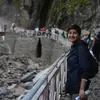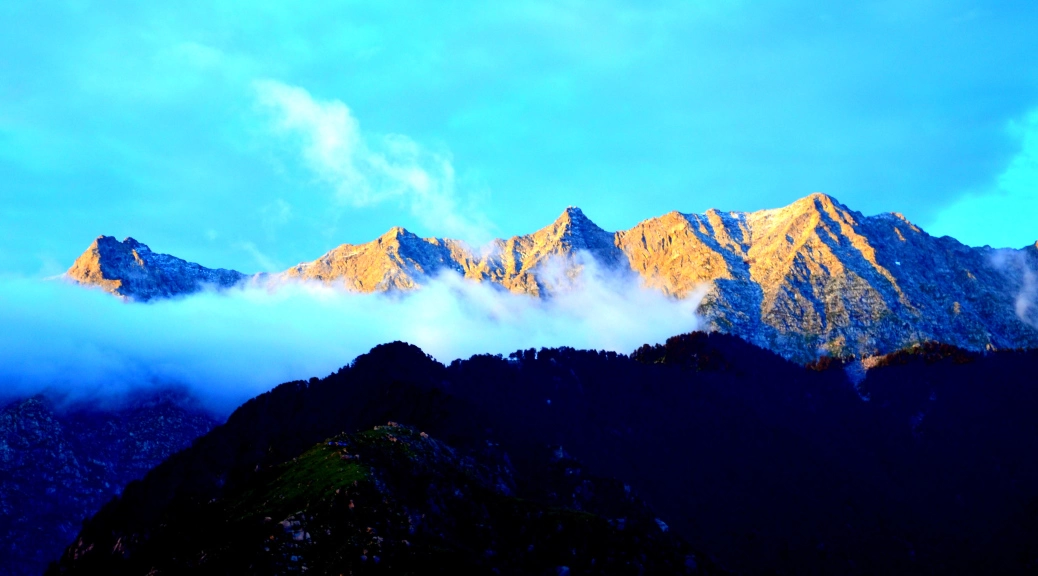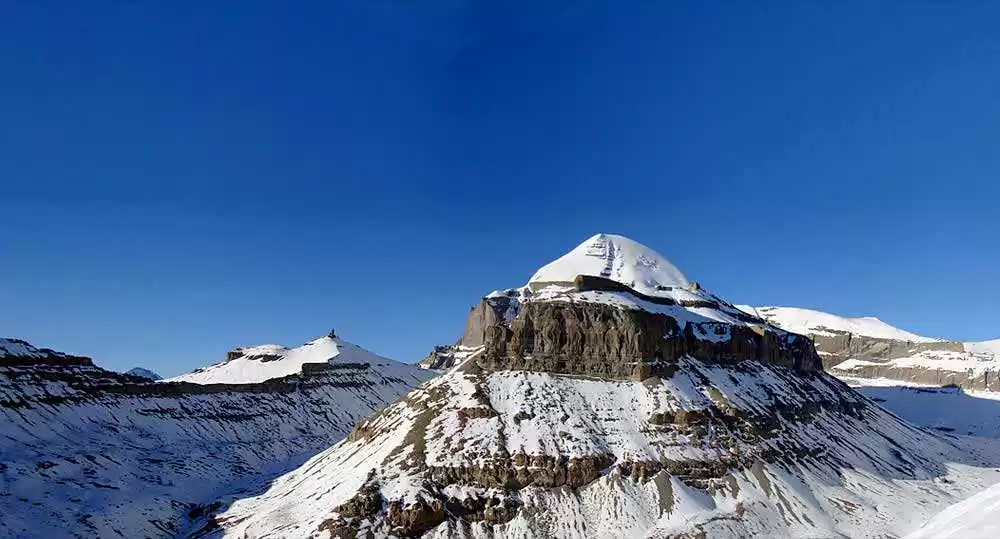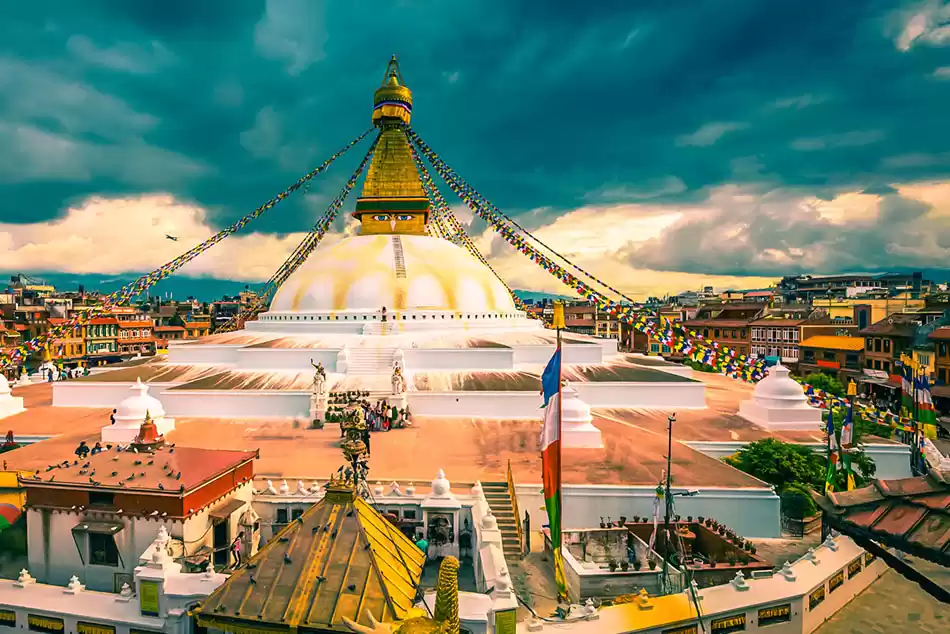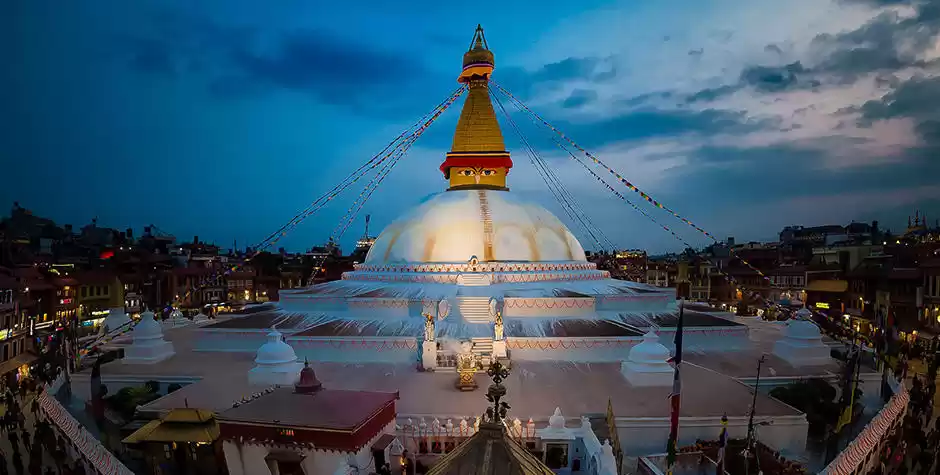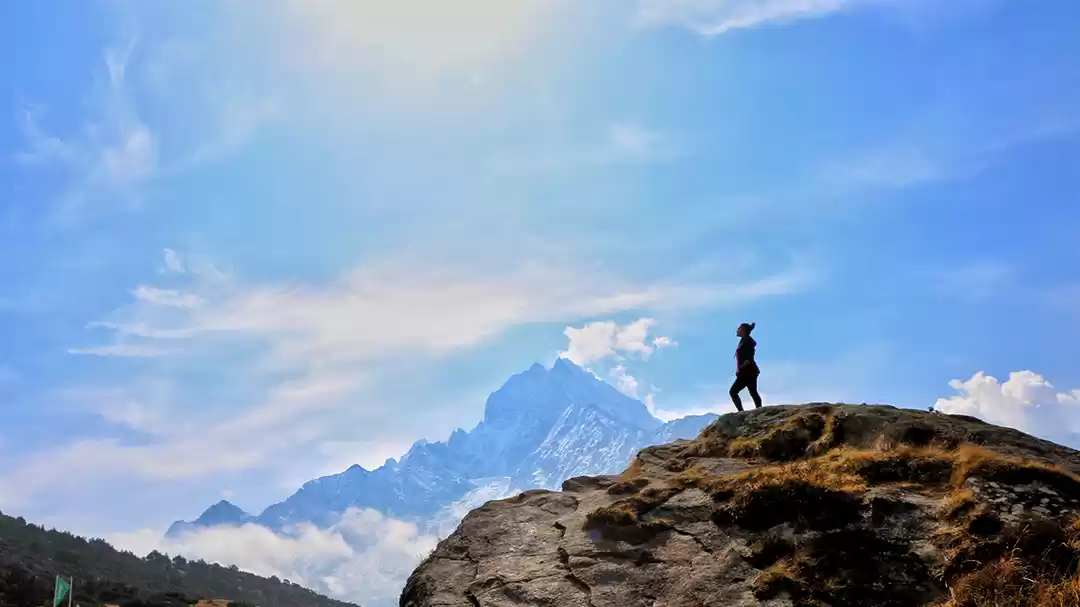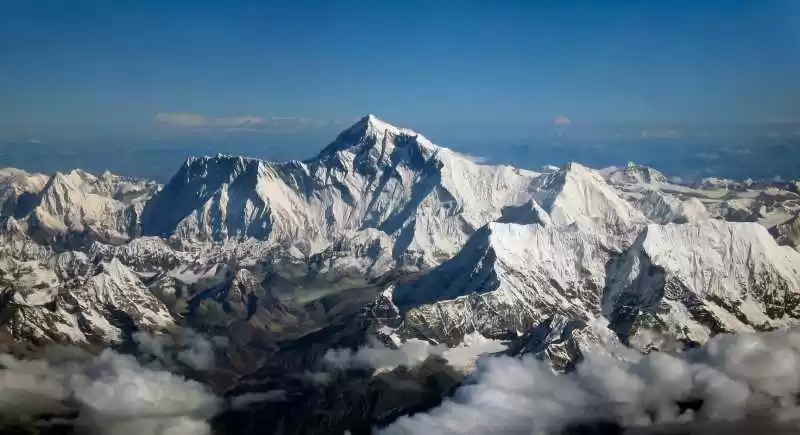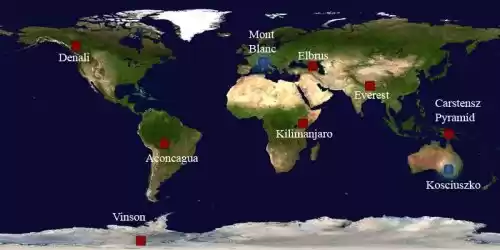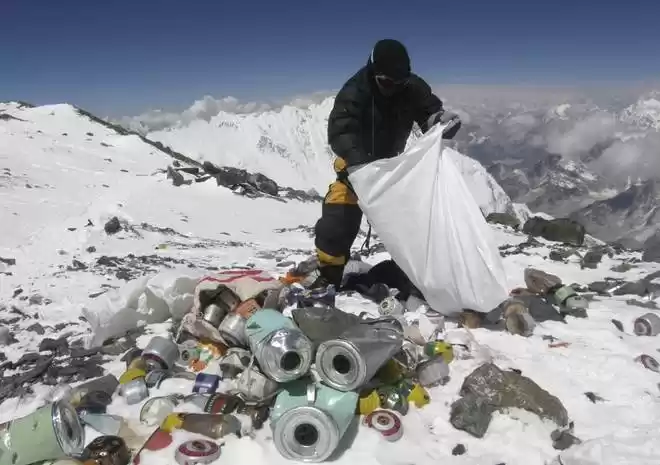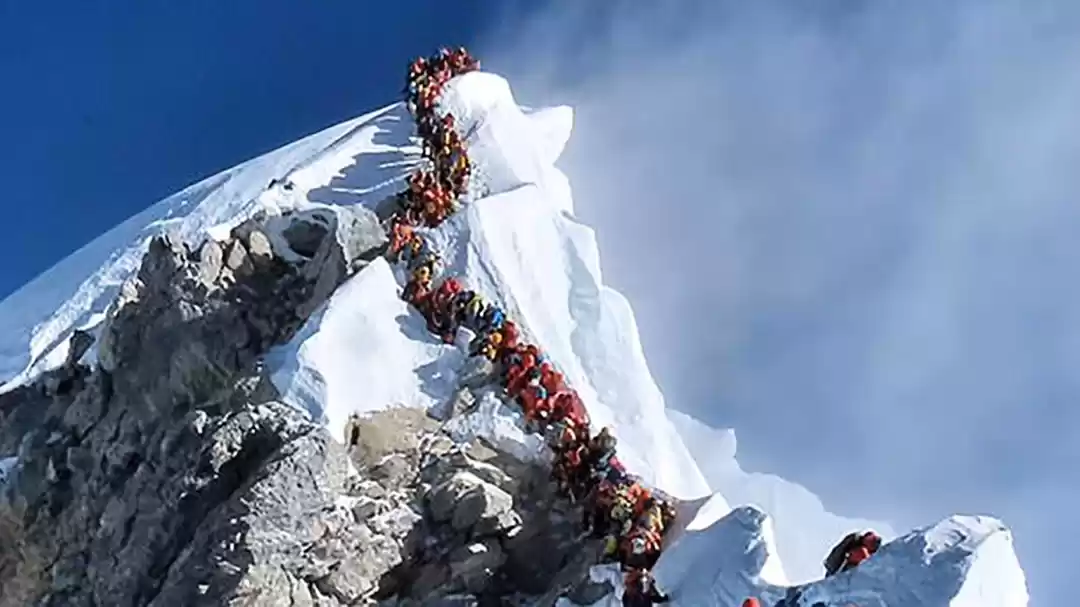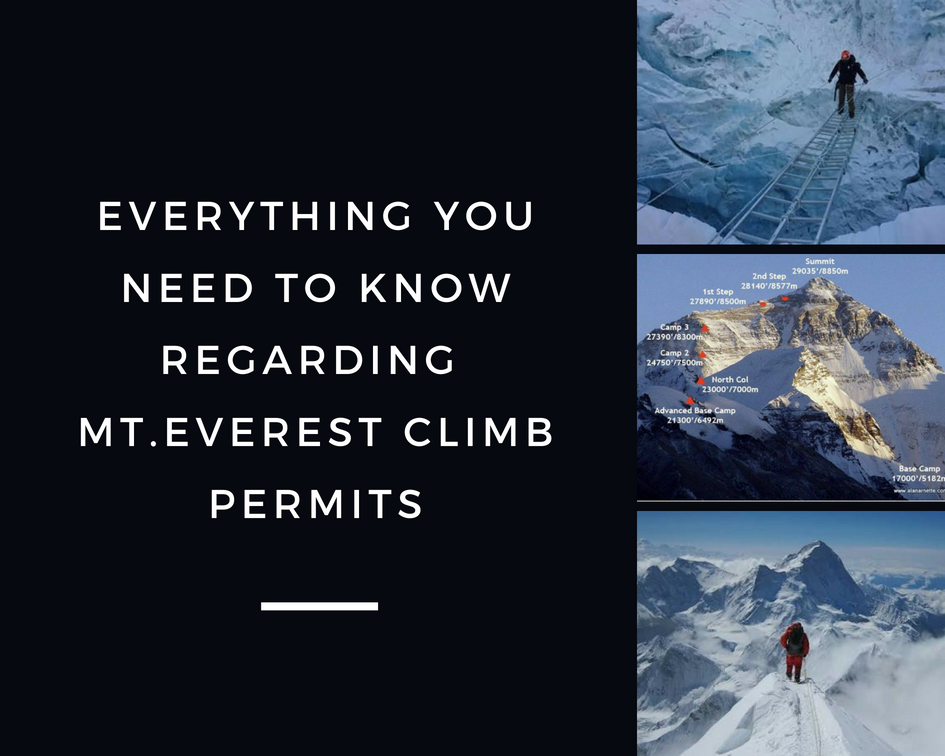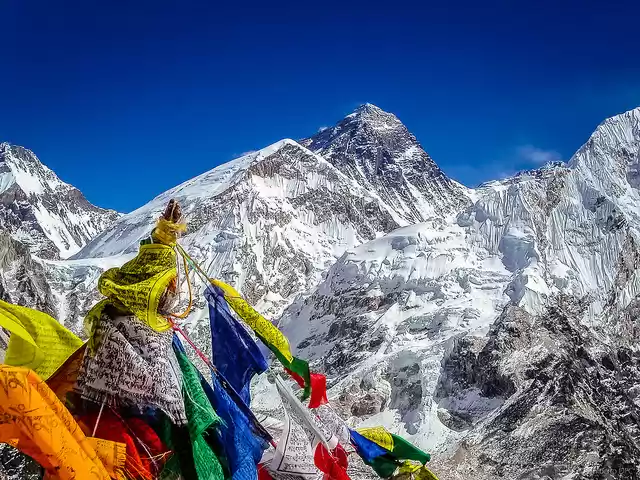The climbing season on Mt Everest has begun and last week, on May 11, at 1700 hours, a team of nine Sherpas stood on top of the world.

These Sherpas, who are the first to summit the Everest this season as part of a rope-fixing expedition, are from various trekking companies working on Mt Everest. The nine climbers have now paved the way for a season that's expected to be a game-changer for many reasons.
The season will be crucial since it would be the first operational season for climbers since the 2014 avalanche near Khumbu Icefall that took the lives of 16 Nepali guides. This was followed by a season shut down at the Base Camp by the Sherpa community who went on strike to raise crucial questions about the working conditions of Sherpas and the regulation on expedition companies at Everest. Next year, in 2015, the tragic earthquake took the lives of hundreds across this Himalayan country and 22 people lost their lives at the Everest Base Camp.

Sherpas Against The Over-Commercialisation Of Everest
In the past years, the Everest has attracted numerous 'hobby-climbers' and the Nepalese government has had no check whatsoever to determine the mountaineering background of these climbers. The Sherpas working with these teams, put their lives at risk every time to help them reach the top. Climbers, at times, reach the summit on Sherpas' backs and no one talks about that at press conferences. Every climber on Mt Everest is expected to have climbed an 8,000 metre peak in the past, but no check is kept by trekking companies or the Nepalese government to ensure the same.
The photograph below is that of a 'human traffic jam' on Everest. It was taken by Ralf Dujmovits in 2012, who is a climber himself, and was present in the 2012 climbing season at the base camp but didn't head to the top.

This particular photograph raised important questions about the regulations (or lack of them) on climbers who are literally walking on moving glaciers. Sustaining an adventure tourism industry on the mountain raises important environmental concerns where littering and over-crowding is an important issue.
More such photographs and footage were brought out by Director Jennifer Peedom, who shot Sherpa, a documentary, along with her team at the Everest route in 2014. This documentary brings out the side of the Sherpa climbers – why this isn't an ordinary mountaineering job, their ethics and how the peak is a deity that needs to be respected and not exploited. The documentary also features live recordings showing the resentment amongst the Sherpa community, who were under pressure by the Western Expedition teams and the Nepalese government to continue with the climbing season, even after the Sherpas were killed in the accident.
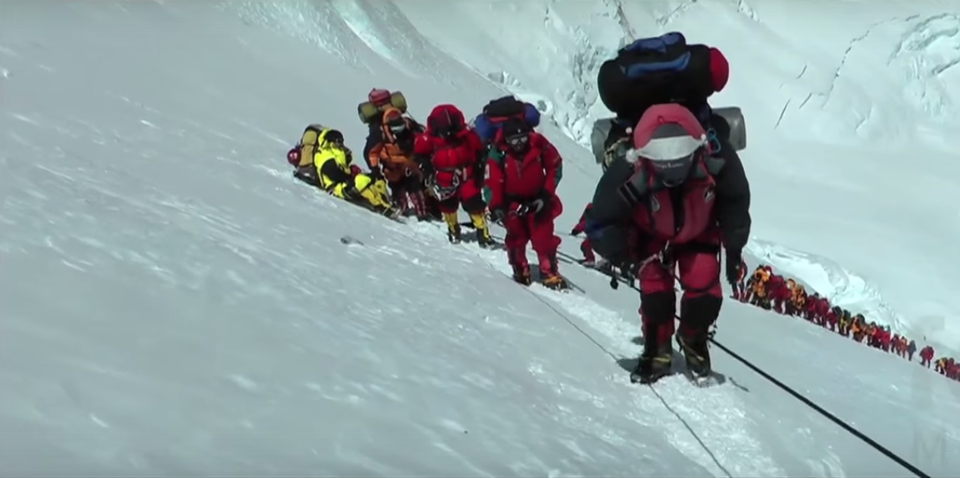
The Current Generation Of Sherpas Wants Equal Wages and Life Insurance
Over the last two years, only a few climbers have reached the summit from the Tibet side. On the other side of the highest mountain on Earth voices of dissent from the Sherpa groups are louder than ever. This generation of educated and qualified Sherpas know how to voice their opinions and demand their rights.
The 2014 season shut down was to pay homage to the deceased after the tragic avalanche, but at the same time, the Sherpa community raised questions about better pay and life insurance.

Few Western climbers also reported events where they were threatened to be killed by these local guides, creating friction between the Westerners and the Sherpas. The Sherpas who have for generations been working on the mountain without formal contracts, are usually hired by the local Nepalese companies. These companies work for the overseas expedition groups and often the Sherpas deal only with the middlemen and the overseas companies have little or no idea about the wages of these local guides.
The Sherpas make 90% less per season than their western counterparts who are marketed as better guides by the international trekking companies. A Sherpa, on an average, climbs the crucial Khumbu Icefall 30 to 40 times per season whereas any western guide makes this attempt not more than 8 to 10 times. The stakes are high and the Sherpa community is finally raising the important question of wage gap, a demand which was previously throttled by comparing high wages of Sherpas in comparison to the national average wage in Nepal.

2015 Nepal Earthquake and Nepal Blockade
In 2015, the economy of this small Himalayan nation was under severe stress, first owing to the horrific earthquake that took more than 4,000 lives around the country and on a second occasion, when Nepal faced a border blockade from the Indian side. On both occasions, the lack of resources and loopholes in policy-making within the country were surfaced. The government faced charges of corruption even in the distribution of international aid provided to the country for the 2015 earthquake rescue and relief programs.
It is often said that what oil is to Middle East, mountaineering is to Nepal. In the 2016 season, the government is facing immense pressure from the international mountaineering communities to regulate adventure tourism within the country to benefit national economy and improve working conditions of the locals.

So what's about to change this year at Everest?
With increasing pressure on the government and the policy makers to bring the required reforms and mountaineering regulations on Everest, Nepalese officials have planned to introduce a ban on novices, disabled, old and very young climbers on the Everest. In the past several disabled climbers have made it to the top on Sherpa backs.
In a climbing season, there are usually less than 12 days when the weather is suitable to summit the Everest. In 2013, 539 climbers attempted to reached the summit from the South side within the limited number of days. These regulations are expected to ensure safety and check overcrowding this year.
Besides their age, this year the climbers will also have to prove their climbing ability before making it the the highest mountain. Only climbers who have scaled peaks higher than 6,500 meters would only be allowed at the base camp. In the previous years, during the peak climbing season, more than 1,500 would crowd the basecamp turning it into a full-fledged town with Sherpas and local guides carrying food, equipments and basic amenities to the Base Camp.

Ang Tshering Sherpa, president of the Nepal Mountaineering Association, is also hopeful about the policy reforms on the working conditions of Sherpas. Increasing number of casualties on the summit have made these reforms more urgent than ever before. Since the stakes are higher, the Sherpas are clearly not ready to make a tiny fraction of what the westerners pay for hiring local guides.
This climbing season is more than just about the bucket list ambitions of climbers from around the world. The last two catastrophic years for the climbing industry in Nepal have sparked irreversible sentiments amongst the Sherpas against the Nepalese government and international expedition companies. Policies have already been framed to check the number of climbers on the summit this year but the lingering question about the environmental hazard is still unanswered.

